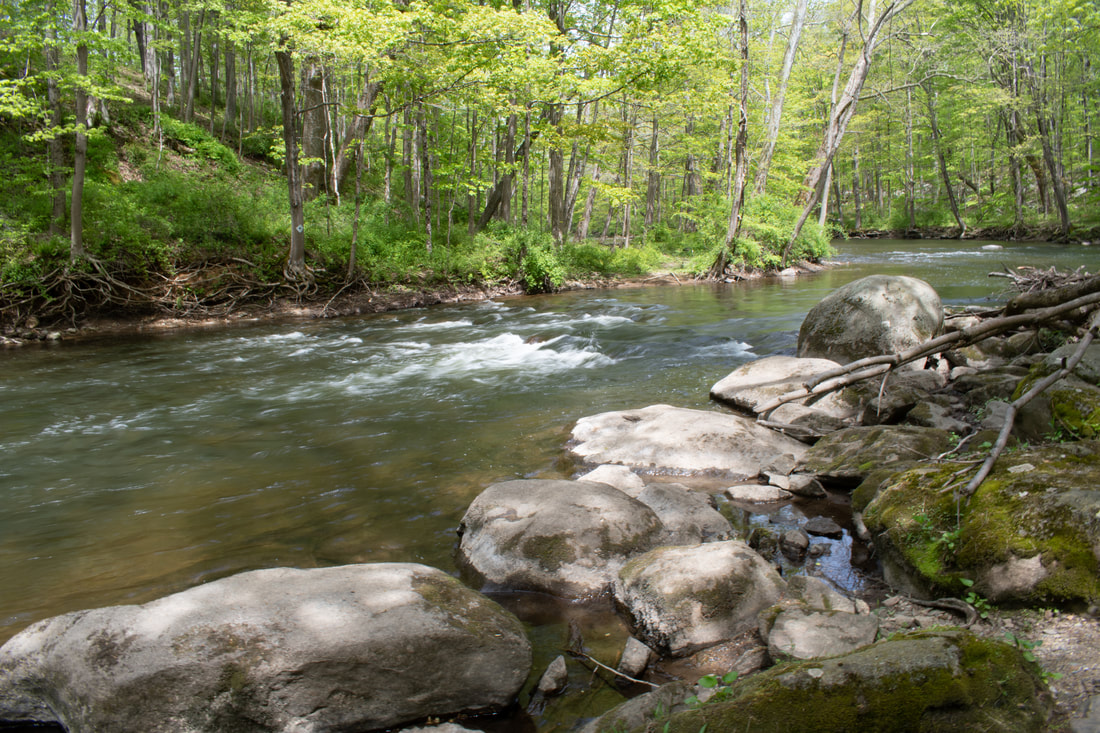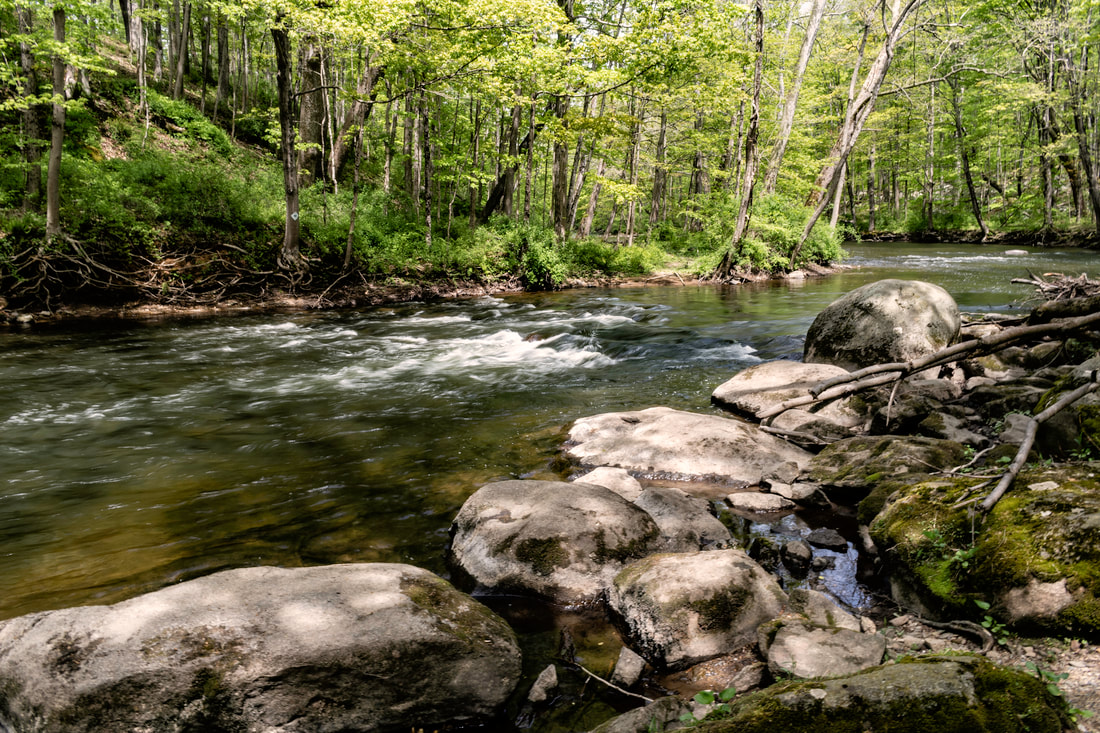New Jersey is often derided for its industrial landscape, but it has many pockets of beauty. Beauty alone is not enough, however. You need to pay attention to how it will look. You may take ten pictures and hope for the best, but a good photograph depends upon the elements of composition— where things are placed in relation to each other, what is included and excluded, vertical versus horizontal, etc. There is no substitute for composition. You can improve a lot of things but there are limits on what you can do once the image is captured.
Here is the unedited image of a small segment of the Musconetcong River in Bloomsbury, New Jersey.
Using both Lightroom and Photoshop, I adjustments to increase contrast, decrease glare in the water, sharpen and warm up the scene, and to bring in detail. I have learned through much trial and error to use these filters subtly in order to preserve the natural effect and avoid the artificial look that comes from overuse. Here is the final product:

